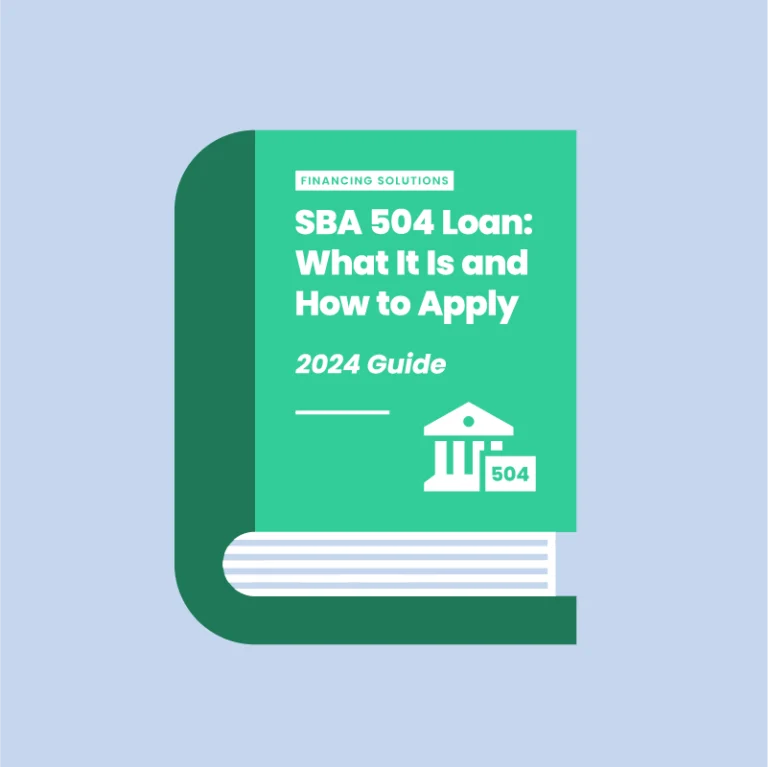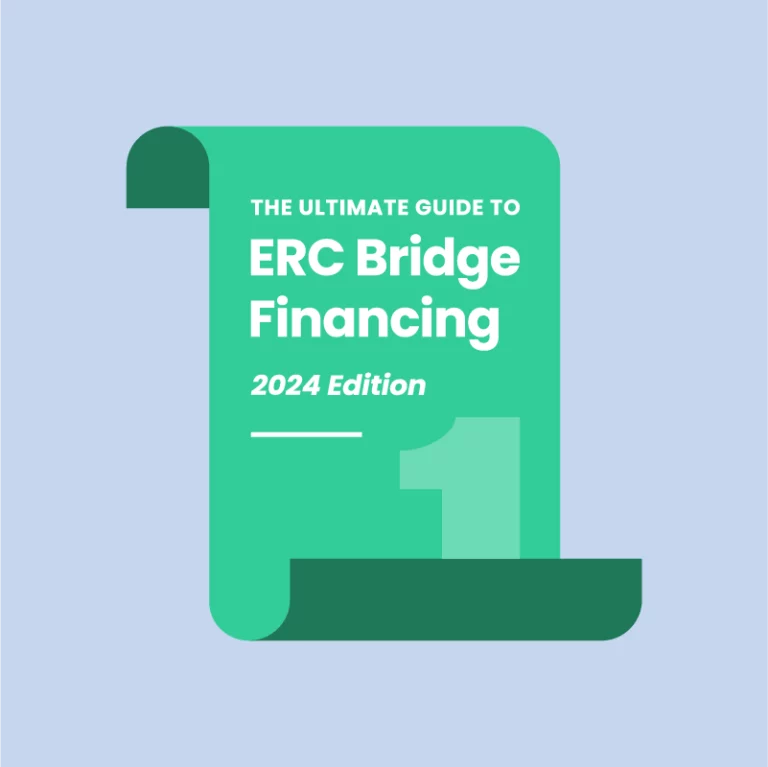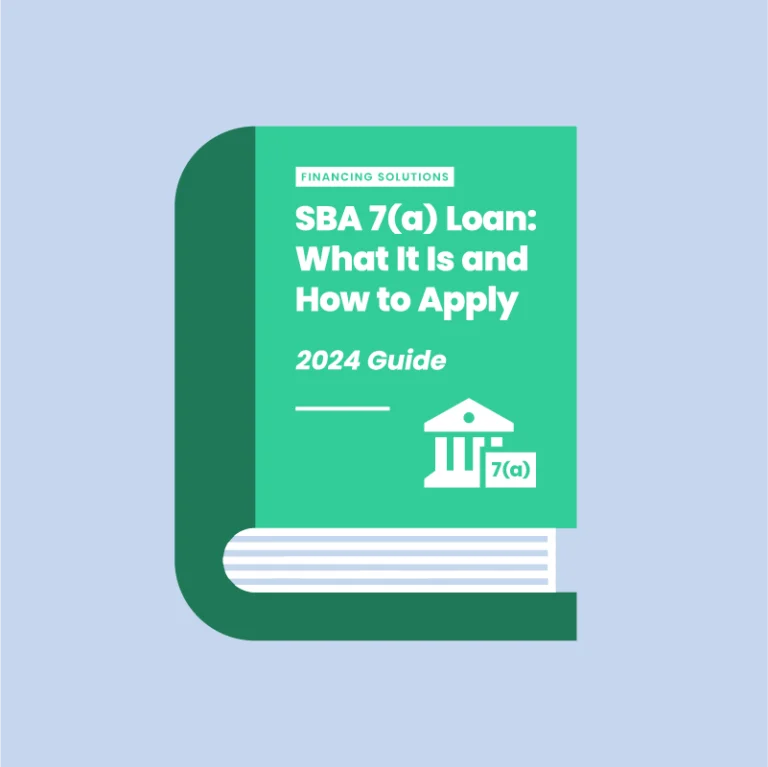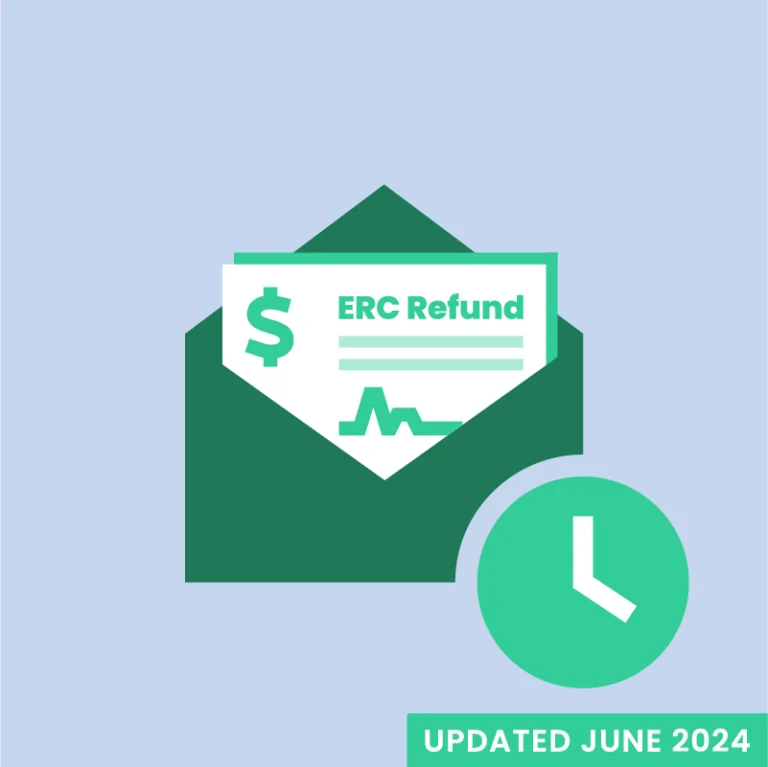Have you been looking into long-term financing options for your business? If so, you’ve probably come across the U.S. Small Business Administration (SBA) 504 Loan Program during your research.
This program can be a game changer for small businesses seeking affordable capital to purchase, upgrade, or build on assets like real estate and equipment. But how exactly does an SBA 504 loan work, and are you eligible?
This article will explain everything you need to know in simple and practical terms so you can decide if an SBA 504 loan is a good fit for you.
What is an SBA 504 Loan?
An SBA 504 loan, or a “CDC/504 loan,” is a small business loan that’s funded by a third-party lender and a Certified Development Company and backed by the SBA. It can be used to purchase real estate, heavy equipment, machinery, furniture, and fixtures. It can also be used to construct or upgrade facilities, refinance commercial debt, or facilitate a change of ownership in your business. The goal of this program is to promote business growth and job creation.
How SBA 504 Loans Work
Unlike SBA 7(a) loans, SBA 504 loans are comprised of three funding sources:
- Third-Party Lender. This is generally a commercial bank or credit union.
- Certified Development Company (CDC). This is a non-profit entity that is certified and regulated by the SBA. CDCs work closely with third-party lenders to package, process, close, and service 504 loans.
- Borrower. This is the individual responsible for taking out the loan.
In most cases, the third-party lender provides 50% of the loan amount, the CDC provides 40%, and the borrower provides 10% as a down payment or equity injection. Mind you, there are some situations (e.g., new businesses and/or limited or special purpose properties) where the loan structure will vary.
Standard Loan | New Business OR Special Purpose Property Loan | New Business AND Special Purpose Property Loan | |
|---|---|---|---|
Third-Party Lender | 50% | 50% | 50% |
CDC | 40% | 35% | 30% |
Borrower | 10% | 15% | 20% |
A new business is one that has been operating for two years or less at the time the loan is approved.
A limited or special purpose property is one that has “a unique physical design, special construction materials or a layout that restricts its utility to the use for which it was built.” Some common examples are bowling alleys, car washes, gas stations, hotels, nursing homes, and wineries.
SBA 504 Loan Features
Like all financing products, SBA 504 loans have specific features that dictate how much you can borrow, how much it will cost, how the funds may be used, and more.
SBA 504 Loan | |
|---|---|
Financing Amount | $25,000 to $5 Million or $5.5 Million for Some Manufacturing and Clean Energy Projects |
Maximum Guarantee | The maximum guarantee is limited to the CDC’s portion of the loan, typically 30-40%. |
Interest Rate | Two rates will apply for the CDC’s and third-party lender’s portions of the loan. See below for further details. |
Fees | Fees will vary but are reasonable compared to the size of the loan. See below for further details. |
Repayment Term | 10, 20, or 25 Years |
Collateral | The property or equipment being financed will generally serve as collateral. In some situations, though, borrowers may be asked to provide additional collateral. |
Fastest Funding | 60 to 90 Days |
Interest Rate
For the CDC’s portion of the loan, the interest rate is fixed and set at an increment above the market rate for five- and 10-year U.S. Treasury notes at the time of sale.
*The current 504 rates as of May 2024 are 6.55% (25-Year SBA 504), 6.57% (25-Year SBA 504 Refinance), 6.65% (20-Year SBA 504), 6.68% (20-Year SBA 504 Refinance), 6.89% (10-Year SBA 504), and 6.89% (10-Year SBA 504 Refinance).
For the third-party lender’s portion of the loan, the interest rate may be fixed or variable and set at increment above the prime rate at the lender’s discretion. Fortunately, this rate is still capped by what the SBA deems reasonable.
*The current prime rate as of May 2024 is 8.50%. Check out the SBA’s FTA Wiki page for the latest prime rates.
Fees
It is helpful to understand that a CDC is not a bank and, therefore, does not hold funds. When an SBA 504 loan is made through a CDC, its portion is raised via a “debenture” or bond sale. There are also administrative costs that the SBA charges, which are often passed on to the borrower.
When borrowers apply for an SBA 504 loan, they’re given a “net debenture” and “gross debenture” amount. The net debenture is the CDC’s portion of the loan, and the gross debenture is the CDC’s portion plus the SBA’s administrative costs.
For the CDC’s and third-party lender’s portions of the loan, the following may apply:
- Guarantee or Guaranty Fee. This is a fee that the SBA charges for loans it guarantees under the 504 program. For the 2024 fiscal year, the fee is 0.0%, so it wouldn’t apply.
- Borrower’s Deposit. This is a deposit of $2,500.00 or 1% of the gross debenture amount (i.e., the CDC’s portion of the loan) that the CDC collects from the borrower when their application is ready to be submitted. If the borrower’s application is denied, their deposit will be refunded. If the borrower’s application is approved, their deposit may be refunded, or they can apply it toward the CDC’s other fees. However, if the borrower withdraws their application before a decision has been made, their deposit may be forfeited.
- Processing or Packaging Fee. This is a one-time fee of 1.5% of the gross debenture amount that the CDC charges for processing the borrower’s application.
- Funding Fee. This is a one-time fee of 0.25% of the gross debenture amount that the CDC charges for the public issuance of securities and the Trustee. Combined with the processing fee, it is comparable to an “origination fee” for a conventional loan.
- Annual Servicing Fee. This is an ongoing fee of 0.364% of the outstanding balance that the CDC charges to cover the overhead costs associated with servicing the borrower’s loan.
- Underwriter’s Fee. This is a one-time fee that the CDC’s underwriting agent charges for organizing and evaluating the borrower’s application. It’s equal to 0.375% of the gross debenture amount for 10-year loans and 0.4% for 20- and 25-year loans.
- Closing Costs. This a one-time fee that the CDC charges for appraisals, legal work, and other miscellaneous costs that may be applicable at closing.
- Late-Payment Fee. This is a fee of $100 or 5% of the monthly payment amount, whichever is greater, that the CDC charges when the borrower misses a payment.
- Prepayment Fee. This is a fee that the CDC charges the borrower if they pay off their loan early. It’s equal to the first year’s interest, and it declines by 20% each year for 10-year loans and 10% for 20- and 25-year loans.
- Lender’s Participation Fee. This is a one-time fee of 0.5% of the first lien (i.e., the third-party lender’s portion of the loan) that the third-party lender charges.
Most of the fees listed will roll into the total loan amount, so the primary upfront cost is the borrower’s down payment of 10-20%.
Use of Funds
Here’s a definitive list of all the 504 loan use cases included in the SBA’s guidelines:
- Purchases or Leases of Land for an Eligible Project
- Site Improvements (e.g., Landscaping, Land Grading, Road and Parking Construction)
- Purchases of One or More Existing Buildings
- Conversions, Expansions, or Renovations of One or More Existing Buildings
- Construction of One or More Buildings
- Purchases or Leases of Heavy Equipment and Machinery
- Refinances of Existing Commercial Real Estate Debt (Including SBA Loans)
504 funds may not be used for working capital, purchases of inventory, speculative items or investments, AI-related working capital, intellectual property, or consultative services.
SBA 504 Loan Requirements
Not all businesses will qualify for an SBA 504 loan. You’ll need to meet the Administration’s minimum requirements as well as those set by your CDC and third-party lender. Usually, this includes the following:
- You’re legally registered as a for-profit business.
- You operate and have a physical location in the United States or its territories.
- You satisfy the SBA’s definition of a “small business.”
- Your net worth is less than $15 million.
- Your average net income was less than $5 million after taxes for the last two years.
- You’re able to demonstrate the need for a loan and describe the purpose for which you’ll use the funds.
- You’re able to show your ability to repay the loan.
- You’re not delinquent on any existing government loans.
- You’ve sought alternative financing options before applying for an SBA 504 loan.
- You’re not an ineligible business such as a non-profit organization, financial institution, gambling entity, government-owned corporation, or speculative business.
In addition to the requirements listed, your CDC and third-party lender may have other criteria — such as personal credit and income — you’ll need to meet.
What’s more, all individuals who own 20% or more of the borrowing entity must sign a personal guarantee.
How to Apply for an SBA 504 Loan
If you determine a 504 loan is right for you, here are the steps you’ll take to apply:
1. Find an SBA 504 Broker or CDC
Research SBA 504 brokers online and CDCs in your area. An experienced SBA 504 broker, like 1st Capital Financial, will have third-party lenders and CDCs in their network and may offer more flexibility when structuring your loan at little to no additional cost. Alternatively, you can work with a CDC directly.
2. Gather the Documents for Your Application
As with an SBA 7(a) loan application, your 504 loan application will require a lot of paperwork. While your chosen broker or CDC should be able to assist you, you can get a head start by collecting the following:
- SBA Form 912 (“Statement of Personal History”)
- SBA Form 413 (“Personal Financial Statement”)
- SBA Form 1244 (“Application for Section 504 Loans”)
- Copies of Your Business’s Financial Statements (e.g., Balance Sheets, Debt Schedule, Profit and Loss Statements, and Financial Projections)
- Copies of Income Tax Returns
- Copies of Business License(s) and Registration(s)
- Copies of Articles of Incorporation and Bylaws, or Operating Agreement
- Copy of Business Plan With Relevant Overview, Company History, and Owners’ Resumes
- Previous Loan Application(s)
- Project Information (e.g., Purchase Agreements or Options to Acquire Real Estate, Appraisal of the Real Estate to Be Acquired, Cost Estimates for Construction, Machinery, and Equipment)
Once you have all the documents and information on hand, it’s time to submit your SBA 504 loan application with your broker or CDC. Be ready to respond to additional requests.
3. Secure a Pre-Approval and a Third-Party Lender
You’ll need a pre-approval decision from a CDC and a third-party lender before your application package can be submitted to the SBA. Bear in mind that these are separate parties with their own criteria, underwriting procedures, and timelines. If an appraisal and environmental review are required, they’ll be ordered on your behalf.
4. Close and Receive Loan Funds
It’ll take five to 10 business days for the SBA to process your 504 loan application and provide an approval decision. Once approved, the closing process begins, and you’ll be asked to sign the final documents. Note that it’ll take 30 to 60 days following the SBA’s approval decision for your loan to fund.
FAQs About SBA 504 Loans
It may be harder to get approved for an SBA 504 loan compared to the Administration’s other loans. This is due to the program’s unique project criteria, and comparatively lower cost and longer repayment terms. However, as it’s still an SBA loan, it’s considered easier than a conventional loan.
The time it takes to fund an SBA 504 loan depends on the project specifications, as well as the CDC and third-party lender that are involved. On average, it’ll take 60 to 90 days from the time you start your application to fund the loan.
The SBA will guarantee the entirety of the debenture that’s raised by the Certified Development Company (CDC). This means that up to 40% of the loan is guaranteed.
Yes, you can pay off an SBA 504 loan early — but there’s a prepayment penalty that may apply. Prepayment penalties are equal to the first year’s interest and decline by 20% each year for a 10-year loan and 10% each year for 20- and 25-year loans. At year six or 11, the penalty would be zero.
The 90% rule suggests that if the appraisal of a fixed asset that’s part of an SBA 504 loan comes back at less than 90% of the estimated value, the loan amount must be reduced or the borrower must provide additional collateral.
SBA 504 Loan Alternatives
504 loans are not one-size-fits-all products. If your project requires more utility, you may want to consider one of these alternatives:
- SBA 7(a) Loan. The SBA’s 7(a) loan program lets you borrow up to $5 million and offers a lot of elasticity when it comes to the use of funds. If your expenditures include working capital or inventory, a 7(a) loan may be a better fit.
- Equipment Financing. Equipment financing allows you to borrow up to $5 million for equipment purchases, repairs, and upgrades. Since these loans are collateralized by the equipment being financed, the eligibility requirements are more lax than those of SBA loans.
- Business Line of Credit. A business line of credit provides you access to $50,000 to $2 million and more flexibility than a business credit card. Since it’s a revolving loan, you can borrow, repay, and borrow again while only paying interest on what you use. If timing is a concern or working capital is what you need, a line of credit may be a good option to consider.
Get Started With 1st Capital Financial
The SBA’s 504 loan is an extraordinary financing mechanism for small businesses with unrivaled rates and term lengths. Though the application process may seem daunting and complex, it’s worthwhile for those with an eligible project.
If a 504 loan interests you or you have questions, we urge you to start your SBA application online with 1st Capital Financial. The company will be your matchmaker when it comes to finding a CDC and partnering with a third-party lender, guide for gathering paperwork, and mentor for avoiding common pitfalls.
Apply for an SBA 7(a), Express, or 504 Loan Today





